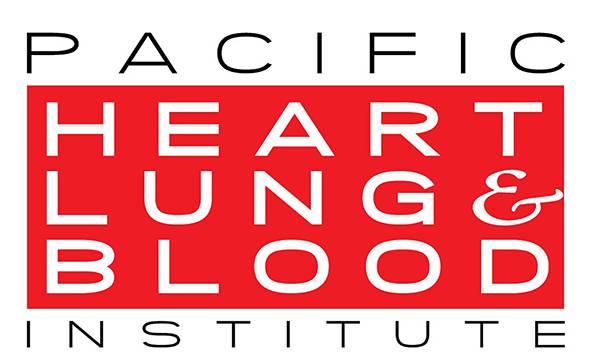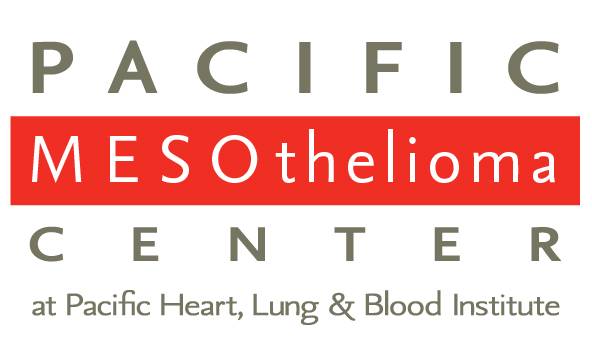TREATMENT
An overarching tenet of PMC’s research agenda is that all projects should be rational and additive; that is, all treatment approaches must be researched, be carefully thought out, be based on available data, provide improved quality of life, be continuously critiqued and re-evaluated, and should be built upon known information and treatment successes, however small.
Even treatments with modest results can produce exceptional results when combined in a rational way. Radical approaches, although somewhat appealing to cancer victims’ frequent desire to “try everything” should be generally avoided due to their inherent high risk and almost uniformly poor results.
DR. ROBERT B. CAMERON
In order to advance this area of PMC’s research program, PMC has chosen to partner with a leading mesothelioma expert, Dr. Robert B. Cameron. Dr. Cameron is a board-certified cardiothoracic and general surgeon with special training in surgical oncology who trained at UCLA, the National Cancer Institute of the National Institutes of Health, Memorial Sloan-Kettering Cancer Center and Cornell-New York Hospital and who has been involved in the treatment of mesothelioma patients since 1986.
Dr. Cameron is the director of the comprehensive mesothelioma program at the David Geffen School of Medicine at the University of California, Los Angeles (UCLA) and the chief of thoracic surgery at the West Los Angeles Veterans’ Administration Medical Center.
He was the first to propose and develop a treatment approach for MPM designed to manage this cancer as a chronic disease similar to high blood pressure and diabetes through a combination of therapies given on a continuous basis while maintaining an outstanding quality of life.
In this regard, Dr. Cameron has been a long-time champion of a lung-sparing pleurectomy/decortication procedure to remove all visible tumor as the basis for his treatment approach. His philosophy has always been to use rational combinations of reasonable therapies in order to allow patients to “live with their cancer” rather than radical and debilitating treatments in an ill-fated attempt at “cure,” a practice which remains true to his Hippocratic Oath to “do no harm.”
Specific research accomplishments, to date in the area of adjuvant biologic treatment therapies include the following:
HYPERTHERMIA
A number of mesothelioma centers have instituted treatment protocols using hyperthermia (heat) treatment during surgery for MPM based on very little real research information. Dr. Cameron has extensive experience in this field, having begun his research career at Stanford University as an undergraduate student in the lab of Dr. George Hahn and Gloria Li doing research on mechanisms of hyperthermia treatment of cancer. Over the last few years, Dr. Cameron and Dr. Dongmei Hou in the Punch Worthington Research Laboratory at UCLA have shown that the initial limited data on hyperthermia cannot be substantiated in more vigorous testing. The failure of hyperthermia as a treatment option for use in mesothelioma is the topic of an upcoming research paper to be published by Drs. Cameron and Hou shortly.
INTERFERON
Although interferon alpha has been used in experimental protocols with and without chemotherapy for the treatment of MPM, all prior attempts at the use of this biologic agent have concentrated on the use of high doses given intermittently. Dr. Cameron searched the use of this agent as a biological “maintenance” agent and years ago discussed this approach personally with Dr. Judah Folkmann, the father of anti-angiogenesis treatment. Dr. Cameron has reviewed his initial findings with patients on interferon surviving almost 3 times as long as those not receiving interferon alpha. These results were presented to the annual meeting of the Society of Thoracic Surgeons in 2006, and Dr. Cameron is planning a larger clinical to test this further when funding is obtained.
INTERLEUKIN-4 IMMUNOTOXIN
A serendipitous finding by one of Dr. Cameron’s research colleagues, Dr. Raj Puri from the FDA and formerly from the National Cancer Institute of the NIH, led to initial “preclinical” testing of this incredibly promising molecule by Dr. Bryce Beseth in Dr. Cameron’s laboratory at UCLA. The results were published in the Annals of Thoracic Surgery in 2004, but unfortunately, this potentially life-saving medicine has not received enough support and funding for further trials in humans, despite grant proposals to agencies such as the Department of Defense. Dr. Cameron feels that this molecule has more potential to help mesothelioma victims than anything else in cancer research today and is desperately seeking funding to initiate an FDA-approved clinical trial in patients undergoing surgery.
CRYOTHERAPY
Although surgery helps remove all visible tumor in 85-90% of patients, the majority still have tumor nodules return in the chest at some point afterward. Since surgery cannot be repeated and often radiation is no longer an option, the only option in the past was chemotherapy. In conjunction with Drs. Fereidoun Abtin and Rob Suh at UCLA, Dr. Cameron has used cryotherapy (freezing therapy) as an alternative, safe, effective, and virtually problem free therapy for localized recurrent tumor nodules. This incredibly simple therapy involves passing a needle into the nodule and freezing it. This kills the tumor cells quite effectively and has dramatically changed the outlook for patients with limited local tumor regrowth. This treatment approach also is the topic of a of an upcoming research paper to be published by Drs. Cameron, Abtin and Suh.
MESOTHELIOMA PREVENTION
Perhaps the most promising area of mesothelioma research, like many diseases, is in the area of prevention. It is far simpler to stop cancer from happening rather than to stop it once it has already happened. PMC is committed to developing a cancer prevention program that will investigate the cellular and molecular changes that occur over the relatively long 15-40+ years that it takes mesothelioma to develop following asbestos exposure. Many people do know they have been exposed and during this time, simple therapies, perhaps as simple as a daily aspirin, may actually stop the changes that lead to cancer.
The following projects have been undertaken in anticipation of an eventual clinical trial on mesothelioma prevention.
CLINICAL DATABASE/REGISTRY
Despite the fact that thousands of MPM victims are treated each year in the U.S. and many more worldwide, MPM patients and physicians alike are confronted with a lack of useful treatment information regarding treatment outcomes. The first step in understanding a disease and, in time, preventing it is to gather information as to its occurrence, treatments, and outcomes. This can and should be a worldwide project. PMC has funded a software development team to create an internet-based website for people ultimately of any nationality to contribute to mesothelioma research by including their own mesothelioma story and medical information. While it is planned to collect data in a highly confidential manner, the information would be collected with informed consent and would be analyzed in a anonymous fashion to help direct further cancer research, to understand biological specimens (see below) and to potentially identify people for future clinical trials in mesothelioma prevention.The first version of this software is in the final stages of development and funding is now sought for maintenance of the actual data and its website expenses.
TISSUE BANK
Basic science research depends on the study of actual tumor as well as normal tissue samples in order to understand how to attack the disease and especially how to prevent it. Without such samples, little progress can be made. As a companion to the above mentioned Mesothelioma Clinical Database/Registry, PMC plans to establish a related tissue bank. PMC has been in contact with the existing University of Pittsburgh virtual mesothelioma tissue bank as well to combine these resources. It is anticipated that the tissue bank will begin once funding is achieved to provide the resources to maintain the tissue samples in PMC’s laboratories.
MESOTHELIOMA EARLY DETECTION/PREVENTION
Populations of people exposed to asbestos, and therefore at risk for mesothelioma and lung cancer, currently have no way of determining whether they will develop one of these terrible cancers. Only approximately 15% of patients exposed to asbestos will actually develop mesothelioma or lung cancer. In addition, there is no test which can detect mesothelioma at an early or even pre-malignant stage. In order to help people at risk detect the disease at an early stage when there are many more options available for effective treatment, PMC plans an aggressive program for improving screening, early detection and prevention.
MESOTHELIOMA SCREENING PROJECTS
Breath test for volatile hydrocarbons. In order for persons exposed to asbestos to determine whether they are among the smaller population of those who are at high risk of actually developing asbestos-related malignancies, PMC plans to examine the volatile hydrocarbons which are exhaled in people’s breath (breath testing). Dr. Cameron has already gained significant experience in breath testing of patients with lung cancer and is eager to expand the testing to patients exposed to asbestos and at risk for mesothelioma. The test involves breathing into a tube which collects volatile hydrocarbons on a filter so they can be analyzed. This project will be conducted at UCLA and other mesothelioma treatment centers across the country.
EARLY DETECTION PROJECTS
Proteonomics in early detection of mesothelioma. Normal and abnormal cells in the body generate distinctive amounts and kinds of proteins. This “protein profile” can be used much like a fingerprint. PMC plans to conduct investigation to determine the “protein profile” generated by mesothelioma cells so that simple blood tests can be used to detect mesothelioma at an early stage. This project will involve analysis of blood and urine from mesothelioma victims at all stages of disease as well as normal and asbestos-exposed people to better define protein profiles in these populations. This project will be conducted at UCLA and other mesothelioma treatment centers across the country.
MESOTHELIOMA PREVENTION PROJECTS
COX-2 inhibition as prevention of mesothelioma. Chronic inflammation induced by asbestos fibers has been implicated in the development of mesothelioma. One way to prevent the development of mesothelioma in patients with known significant asbestos exposure is to treat them with COX-2 inhibitors (Celebrex, etc.) of inflammation. This has already been shown to prevent other cancers, such as colon cancer, and may be effective in lung cancer. This project will be conducted at UCLA and other mesothelioma treatment centers across the country in conjunction with Unions of high risk workers/patients.
FUTURE RESEARCH GOALS AND PLANS
PMC plans to build on its past accomplishments (see below) in the following projects. Each project is linked to PMC’s past research experiences and will help provide translational research to guide the development of future therapies in malignant pleural mesothelioma and even perhaps a cure.
TREATMENT
PMC plans to continue to support basic science and clinical research projects to expand on the concept of rational lung-sparing treatment approaches that have been developed to date. Projects will seek to continue to provide improved quality of life and, at the same time, incremental treatment success.
Specific research projects in the area of adjuvant biologic treatment therapies include the following:
INTERLEUKIN-4 IMMUNOTOXIN
A serendipitous finding that a protein exists on the surface of mesothelioma cells that far outnumber those on any other cell in the human body by at least 50-100 times created a possible way to “target” potential treatments to only tumor cells. This protein binds to a normal body “messenger” molecule called interleukin-4 or IL-4. Collaborators at the FDA and NIH have created a modified IL-4 molecule that includes a deadly biologic toxin attached to it as a potential “targeted” treatment that takes advantage of this unique situation. The toxin called IL-4-PE or PRX321 was tested in various cancer models in the Punch Worthington Research Laboratory at UCLA and found to be extremely effective in killing mesothelioma cells and curing animals with mesothelioma. The results were published in a landmark paper in the journal Annals of Thoracic Surgery (78:436-43, 2004). This now has pointed the way to a desperately needed clinical trial in patients with this uniformly fatal disease. This toxin is the most promising new treatment for patients with this disease and may provide, for the first time, actual hope of a “cure.” A grant was submitted in 2010 to the Department of Defense (DOD) for $2.9 million over 2-3 years (an average amount for current clinical trials of this magnitude) to begin this critical testing, however, the DOD declined to fund this desperately needed study despite the compelling “preclinical” testing results and the numerous victims of this disease among DOD military service veterans. Other funding opportunities, such as the NIH, are being actively pursued but with the current government fiscal crisis and huge numbers of applicants from other more common cancers, funding remains unlikely. $2.5 million in funding (toxin will be provided free of charge) for this clinical trial is our top priority as we are convinced that this toxin remains the best hope for meaningful improvement in mesothelioma victims’ lives and the real possibility of cure.
GENETIC MODIFICATION OF THE TUMOR “STROMAL” ENVIRONMENT
This promising new area of research is based on early research finding in this area performed in lung cancer models at the West Los Angeles VA Medical Center (WLAVA). Collaborators at the WLAVA have demonstrated important findings on the effects of changing the production of molecules by the supporting normal “stromal” cells rather than targeting the tumor cells, themselves. The results of this work have been published just recently in the journal Clinical Cancer Research(17:3660-72, 2011). This approach, while promising in lung cancer, is even more promising in mesothelioma for several reasons. First, the molecules that are being changed involve new blood vessel formation (angiogenesis) and expression of biologic agents that we have been testing in mesothelioma for the last 10 years, such as interferon alpha. Secondly, when surgery is performed in this terrible disease, the entire area of tumor involvement or “tumor bed’ is exposed, providing an ideal opportunity to apply this type of therapy. Although basic “preclinical” testing has been performed in lung cancer, similar studies must be done in mesothelioma prior to trying this approach in human cancer patients. This could be accomplished through a PMC/WLAVA collaborative research program. The funding required for this program is $350,000-$500,000/year for 3-5 years. Additional funding of $150,000 would also be required for upgrading PMC’s laboratory capabilities. In terms of future treatment development, this area of research provides perhaps the highest promise and could be combined in the future with IL-4-PE therapy as described above for a potentially incredibly effective treatment doublet.
INTERFERON-ALPHA
PMC and UCLA have had a long-term interest in the use of interferon alpha in the treatment of mesothelioma. Intriguing data suggests a useful role for this molecule in “maintenance” therapy for mesothelioma. UCLA has been the leading institution in the treatment philosophy that mesothelioma should be treated as a chronic disease, much like high blood pressure or diabetes (both incurable and potentially fatal diseases that can be controlled with effective long-term therapies). The use of interferon alpha as the “insulin” of mesothelioma treatment, keeping the tumor in check for long periods of time deserves further critical study. A randomized prospective clinical trial is needed for this with biological correlative studies examining monitoring methods such as urine production of bFGF, a normal body hormone produced in the process of angiogenesis. This clinical trial has had the support of Schering Plough to provide the medication for free but would require $1.2-1.5 million for the necessary support structure including research data collection/reporting, nursing assistance, and most importantly potentially clinical care that would be deemed “experimental” by insurance companies and therefore not reimbursed.
CRYOTHERAPY
The use of cryotherapy will be continued to be explored, particularly in conjunction with other type of therapy. For instance, there is some information that suggests that cryotherapy can be a kind of “vaccine” opportunity. The effectiveness of destroyed tumor as a “vaccine” for the body to recognize other areas of tumor is an intriguing area for research. Combinations of cryotherapy with immunotherapeutic agents, such as interferon alpha, interleukin-2, etc. may provide treatment that extends beyond the simple boundaries of the frozen tissue. This can be investigated with animal models as well as in humans with further exploratory phase I clinical trials in limited numbers of patients. Funding is the only limiting factor and will require $250,000/year.
PREVENTION
Projects that investigate mesothelioma prevention are critical on the “to do list” for PMC. These projects include basic science studies and clinical projects as outlined below:
INTERNATIONAL MESOTHELIOMA DATA REGISTRY AND TISSUE BANK
For years the international community involved in bone marrow transplantation for leukemia and other diseases has collected simple data on patients treated globally with bone marrow transplants. This bone marrow data registry has supported multi-million dollar research projects annually for over the last decade producing valuable information for these patients. A similar approach in mesothelioma would potentially provide, for the first time, real facts regarding the true incidence of mesothelioma, changing patterns of occurrence, types of treatments used worldwide and their success rates, and provide independent data to confirm or disprove claims made by various researchers outside as well as inside the U.S. The simultaneous collection of “tissue” specimens (urine, blood, tumor, and normal tissues) would make this tissue bank one of the most valuable research resources in the world in mesothelioma. Furthermore, the collection of samples from people with known exposure but who have not developed mesothelioma would provide an additional exceptional resource. Although others have started small tissue banks, nobody has developed anything like this on this scale and with the amount of information to be collected. PMC has worked on this project for the past 3-5 years developing the software for an internet-based registry and health information center that will serve not only as the registries information center but as a free “health care record” for those mesothelioma and asbestos-exposure victims who wish to utilize PMC’s resources. While the software has been developed, funds are needed to lease internet servers and database licenses, provide computerized technical support, lease storage space for tissue specimens including freezers and liquid nitrogen supplies, and hire laboratory personnel necessary to process and maintain such a tissue bank. This cost is not trivial but initially would be lower due to the small initial scale. The funding needed for this important project is initially $250,000/year.
MESOTHELIOMA CARCINOGENESIS
The fact that exposure to asbestos takes years to produce a human cancer opens the door to both understanding the biological steps for this transition and to possible ways to prevention of one or more of these critical steps. Animal models of asbestos-induced pleural tumors can be studied with modern “gene chip” technology to define the role of literally thousands of genes in this process. While tremendous data can be generated, this type of research isn’t cheap. Animal studies and “gene chips” require substantial resources with funding on the order of $1-5 million required for this project.
ADMINISTRATIVE IMPROVEMENTS IN MEDICAL CARE
In addition to research into therapeutic and scientific advancements, Dr. Cameron is committed to investigating ways in which the administration of medical care can be improved so that patients are vested with additional knowledge, security and control regarding their treatment.
ELECTRONIC MEDICAL RECORDS SYSTEM
Dr. Cameron believes in empowering patients with their own medical records for better understanding and control over their own health and treatment. Dr. Cameron and PMC support an electronic medical records system which is directly accessible to patients. Such a system would enable data to be directly entered from point of generation and allow for the coordinated transfer of medical information among providers and research studies. This type of system would result in complete and organized records possessed by all persons and facilities involved in the treatment, thereby increasing the time for meaningful discussions of medical problems between health care providers and patients and improving the quality and efficacy of patient care.
HEALTH CARE SYSTEMS
Dr. Cameron recognizes the need for development of novel methods of health care delivery. Dr. Cameron and PMC support a system founded on a “ability to pay” basis. This means that instead of every person paying a health-handicapped insurance premium to a “for-profit” company, people would pay based on their ability to contribute to a “catastrophic” government fund while using individual savings accounts for lower cost items. This would allow individual provider-based pricing but income-based premium payments. This project will involve collection and analysis of data on individual access and consistency of access system approaches.





